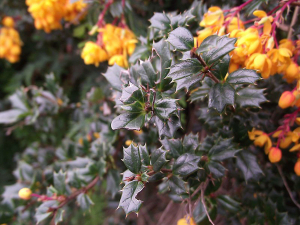EPA chief executive to step down
Allan Freeth, chief executive of the Environmental Protection Authority (EPA) has announced he is resigning.
 Darwin’s barberry is a resilient noxious weed found in disturbed forests, pastures, shrubland and short tussock-land.
Darwin’s barberry is a resilient noxious weed found in disturbed forests, pastures, shrubland and short tussock-land.
The Environmental Protection Authority (EPA) has approved a rust fungus and a flower weevil to control Darwin’s barberry, a spiny invasive shrub.
Environment Canterbury, on behalf of the National Biocontrol Collective, applied to use two biological control agents to combat Darwin’s Barberry in New Zealand.
Darwin’s barberry is a resilient noxious weed found in disturbed forests, pastures, shrubland and short tussock-land. It is considered a threat to indigenous ecosystems throughout the country, as well as pastures where livestock graze.
Standard control methods like herbicides or weeding can prove costly, impractical and harmful to the environment.
It is native to Chile and Argentina and was introduced into New Zealand as a garden plant in the 1940s. Fruit-eating birds deposit seeds far from the parent bush, increasing its spread.
The plant can be found throughout New Zealand – particularly in the Canterbury, Otago, and Wellington regions.
The proposed biocontrol agents could also be used to target Darwin’s barberry elsewhere in the country.
Both the flower weevil and the rust fungus proposed for introduction are native to South America.
All organisms new to New Zealand must receive approval from the EPA before being released into the New Zealand environment.
Dr Chris Hill, general manager of hazardous substances and new organisms at the EPA, says the independent decision-making committee approved the introduction of the new organisms following “rigorous, evidence-based assessment”.
“The applicant’s risk assessment showed that these agents are highly unlikely to harm native plants or animals,” Hill says.
“The weevil does not bite or sting, so there is no health risk to people, and the rust fungus is also benign,” he adds.
Hill says the decision followed public consultation, engagement with mana whenua, and consideration of international best practice.
“New Zealand has a strong track record of using biological control agents to manage invasive weeds with minimal impact on native ecosystems," he concludes.
The Coalition Government will need the support of at least one opposition party to ratify the free trade deal with India.
Primary sector leaders have welcomed the announcement of a Free Trade Agreement between India and New Zealand.
At Pāmu’s Kepler Farm in Manapouri, mating has wrapped up at the across-breed Beef Progeny Test.
More than 150 people turned up at Parliament recently to celebrate the 20th anniversary of Horticulture New Zealand (HortNZ).
Biosecurity New Zealand says Kiwis should continue to keep an eye out for yellow-legged hornets (Vespa velutina) over the holiday season.
Fonterra has slashed another 50c off its milk price forecast as global milk flows shows no sign of easing.